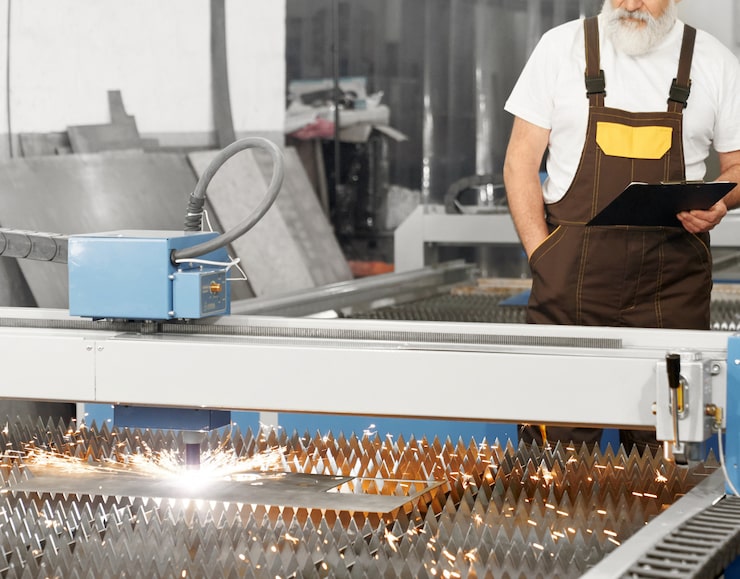Plastic extrusion is a widely used manufacturing process that transforms raw plastic materials into continuous profiles of a fixed cross-section. Central to this process is the extruder for plastic, a specialized machine designed to melt and shape plastic resins into various products such as pipes, sheets, films, and more. Understanding how plastic extrusion works is essential for industries ranging from packaging to construction, as it ensures efficient production and consistent quality.

The process begins with raw plastic materials, typically in the form of pellets, granules, or powders. These materials are fed into the extruder for plastic through a hopper. Inside the extruder, a rotating screw pushes the plastic forward through a heated barrel. As the plastic moves along the barrel, it is gradually heated and melted by a combination of external heaters and the mechanical energy generated by the screw rotation. This melting transforms the solid plastic into a viscous, moldable fluid.
Once the plastic is melted, it reaches the die, a critical component that shapes the material into the desired profile. The die opening determines the cross-sectional shape of the extruded product. For example, round dies produce pipes, while flat dies can produce sheets or films. The molten plastic is forced through the die under pressure, maintaining a steady flow and shape.
After passing through the die, the extruded plastic enters a cooling stage. Cooling is essential to solidify the shape and stabilize the dimensions of the final product. This is typically done by passing the extrusion through a water bath or air cooling system. Proper cooling ensures minimal deformation and retains the structural integrity of the product.
The last stage involves pulling the solidified plastic through a series of rollers or conveyors to maintain consistent speed and tension. Afterward, the product may be cut to specified lengths or rolled up for storage and transportation. Throughout this stage, quality control checks are often performed to verify dimensional accuracy and surface finish.
The extruder for plastic typically consists of several key components: the hopper, screw, barrel, heaters, die, and cooling system. Each component must work harmoniously to produce high-quality extrusions. The design of the screw, for instance, affects how efficiently the plastic melts and flows. Different screw geometries are used depending on the type of plastic and the desired output, ensuring optimal melting, mixing, and pressure build-up.
Plastic extrusion offers several advantages. It is a continuous process, which makes it highly efficient for large-volume production. The ability to produce complex profiles with tight tolerances is another benefit, making extrusion suitable for specialized applications. Moreover, the process is adaptable to a wide variety of thermoplastic materials, including polyethylene (PE), polypropylene (PP), polyvinyl chloride (PVC), and many others.
One challenge in plastic extrusion is maintaining consistent temperature control. If the plastic is overheated, it can degrade, affecting product quality and strength. Conversely, insufficient heating leads to incomplete melting and poor surface finish. Advanced extruders use multiple heating zones along the barrel, each controlled precisely to maintain uniform melting.
Another factor influencing extrusion quality is the cooling process. Cooling must be carefully controlled to avoid warping or internal stresses. Rapid or uneven cooling can cause defects such as shrinkage or cracks. Therefore, the cooling system design, including water bath temperature and air flow, plays a critical role in the final product’s properties.
In terms of applications, plastic extrusion is used across many industries. In construction, extruded PVC pipes are commonly used for plumbing and electrical conduits. The packaging industry utilizes extruded films and sheets for bags and wraps. Automotive parts, medical tubing, and consumer goods are also frequently manufactured through extrusion due to its versatility and cost-effectiveness.
Innovations in extrusion technology have led to enhanced machine designs and automation. Modern extruders often feature computer-controlled systems that monitor temperature, pressure, and screw speed in real time. This automation improves consistency, reduces waste, and allows for quick adjustments during production runs.
Sustainability is increasingly important in plastic extrusion. Manufacturers are exploring the use of recycled plastics and bio-based materials in extrusion processes. Although processing recycled plastics can be more challenging due to impurities and variable quality, advancements in extruder design help accommodate these materials without compromising product performance.
In summary, the process of plastic extrusion is a sophisticated balance of material handling, melting, shaping, cooling, and finishing. The extruder for plastic serves as the heart of this process, orchestrating each step to transform raw plastic into valuable products. Understanding the intricacies of extrusion enables businesses to optimize production, meet market demands, and innovate within the ever-evolving plastics industry.


